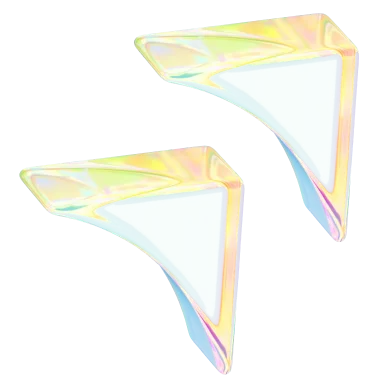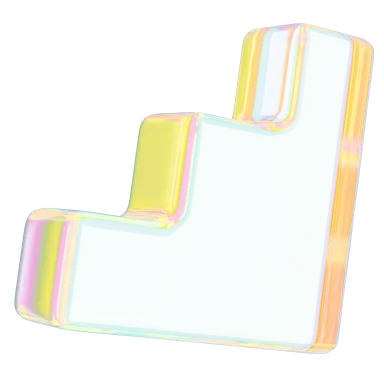Cover Letters vs. Resumes: Learn the Key Differences 📝
- Remote Working & Freelancing

Learn the differences between cover letters and resumes and how to write them to leave a lasting impression on potential clients.
In today's fiercely competitive job market, standing out from the crowd is more vital than ever. Strong resumes and compelling cover letters have become indispensable tools in capturing attention and making memorable impressions on potential clients. But how do you differentiate between the two, and how can you optimize each to tell your unique professional story?
In this guide, we'll demystify the distinctions between cover letters and resumes, offering insights, tips, and the added edge of Contra's portfolio features. When it comes to elevating your freelance narrative and carving out your distinctive space in this bustling marketplace, here’s what you need to know.

What is a cover letter? 📜
A cover letter is a one-page document that provides a personalized introduction to potential employers, human resource (HR) managers, or clients, emphasizing how your skills, experiences, and motivations make you the perfect fit for the role. It lets you present your personality, explain specific career choices, and convey enthusiasm for the position.
How to write a cover letter: Listing the main elements ✍️
A cover letter should be well-structured and clearly indicate information. Here are the main elements of a cover letter format/cover letter template:
- Header: Much like a formal letter, the cover letter starts with a header containing your contact details, the date, and the recipient's contact information.
- Salutation: It's the greeting you use to address the hiring manager or client. Whenever possible, it's best to find out the name of the person responsible for hiring and address them directly, e.g., "Dear Mr. Smith." Avoid using the outdated “To whom it may concern.”
- Opening paragraph: This initial section grabs the reader's attention by introducing who you are, the position you're applying for, and a brief mention of how you're an ideal fit.
- Body: Typically one or two paragraphs, the body dives deeper into specific experiences or skills you've highlighted in your resume, giving context and narrating stories that showcase your qualifications.
- Closing statement: This is where you reiterate your enthusiasm for the role, provide a summary of your key strengths, and express gratitude for being considered.
- Signature: Concluding the letter, sign off professionally with a phrase like "Sincerely" or "Best regards," followed by your name. If it's a physical letter, include your handwritten signature above your typed name.
What is a resume? 🖇️
A resume, also known as a curriculum vitae or CV, is a succinct document that summarizes your professional background, including experiences, skills, and educational qualifications. It serves as a snapshot of your career, offering potential employers or clients an overview of your professional trajectory and key accomplishments.
It’s usually one or two pages, has headings with short bullet points, and should use targeted power words specific to the role you’re applying for in your job search.
How to make a resume: Explaining the key elements 💻
A resume includes factual information about your past and present stints. Here are the essential elements to add to your resume:
- Contact information: This is typically the first section of a resume, containing your name, phone number, professional email address, and, optionally, a LinkedIn profile or personal website link.
- Objective or summary: This is a brief statement (1–2 sentences) capturing your career goals or summarizing your professional qualifications. It gives readers an immediate sense of who you are and what you're seeking.
- Experience: This section reverse-chronologically lists your employment history, beginning with the most recent position. Each entry usually includes the job title, company name, location, and duration of employment. Bullet points beneath each position highlight key responsibilities and achievements.
- Education: Here, you detail your academic qualifications, starting with the highest degree attained. Information typically includes the institution’s name, degree awarded, major, and graduation date.
- Skills: A resume should list specific abilities relevant to the job you're applying for, such as proficiency in certain software, languages spoken, or other specialized skills.
Cover letters vs. resumes: Discerning the differences 🎭
Navigating the intricacies of job applications requires a keen understanding of the distinction between cover letters and resumes. Here are some fundamental differences between the two:
- Format: A cover letter mirrors a formal letter, with a flow that introduces you and narrates your fit for the role. In contrast, a resume adopts a structured approach, often with bullet points, offering a concise breakdown of your professional history.
- Purpose: The cover letter is your pitch, emphasizing the why — your motivation and alignment with the role or project. The resume, on the other hand, is all about the what — presenting a factual overview of your qualifications, past roles, and skills.
- Tone of voice: Cover letters lean toward a personal, slightly conversational tone, revealing your character and enthusiasm. Resumes, however, maintain a neutral, fact-based voice, focusing on clarity and succinctness.
How do resumes and cover letters complement each other? 🤔
Resumes and cover letters are akin to two sides of the same coin — each with its distinct purpose but collectively presenting a fuller picture of a candidate.
A resume provides a structured overview of your professional journey. It’s a factual chronicle of what you bring to the table. However, while detailed, resumes can sometimes feel impersonal, as they predominantly consist of hard facts and seldom dive deep into motivations or personal narratives.
A cover letter, conversely, offers a chance to infuse a personal touch into your application. It fills in the gaps, providing context to the resume. It might explain career transitions, showcase personal qualities that don't fit into a resume's structure, or even illustrate how specific experiences shaped you professionally.
Together, they're a formidable duo. While the resume says, "Here's everything I've achieved," the cover letter adds, "and here's why it matters to both of us." The symbiotic relationship ensures potential employers or clients get a holistic understanding of who you are –– both as a professional and an individual.
How to promote your freelance services creatively 🎨
As an Independent, you definitely want to differentiate yourself from the crowd and promote your services in unique ways. And Contra has you covered.
Contra allows you to create a professional portfolio (or Contra portfolio), where you can present a collection of your skills and achievements or accomplishments. Here, you can add examples of your work and showcase your expertise in your chosen field and unique abilities. Here’s what you can include in your digital portfolio:
- A quick introduction: This will inform potential clients about you and your services.
- Your past work: This will demonstrate your capabilities and subject matter expertise.
- Evidence of your impact: This will highlight the results generated from your efforts.
- Client testimonials: If you have any final words from your previous clients worth mentioning, add them here. This will boost your credibility.
Digital portfolio examples 🥳
If you’re unsure about where to start, here are two great examples from the Contra community to seek inspiration:
- Meagan Bolds’ portfolio: Bolds specializes in graphic design, photography, and photo editing. Her portfolio includes her services, past work, and client recommendations. She uses a minimalist approach with her background, highly focusing on the vibrant colors of her previous projects.
- Maia Anderson’s portfolio: Anderson, a U.S.-based freelancer, specializes in social media strategy and user-generated content. Her focus area is weddings, and she’s currently one of the top Independents on Contra.
Kickstart your freelance journey with Contra 🌟
Ready to stand out in the bustling world of freelancing? Create your digital portfolio on Contra and showcase your expertise in a unique and captivating way. Engage with a vibrant community of like-minded Independents, collaborate on groundbreaking projects, and, best of all, promote your services commission-free.
Don't just follow the freelance wave; ride at its crest with Contra. Start building your standout portfolio today.











